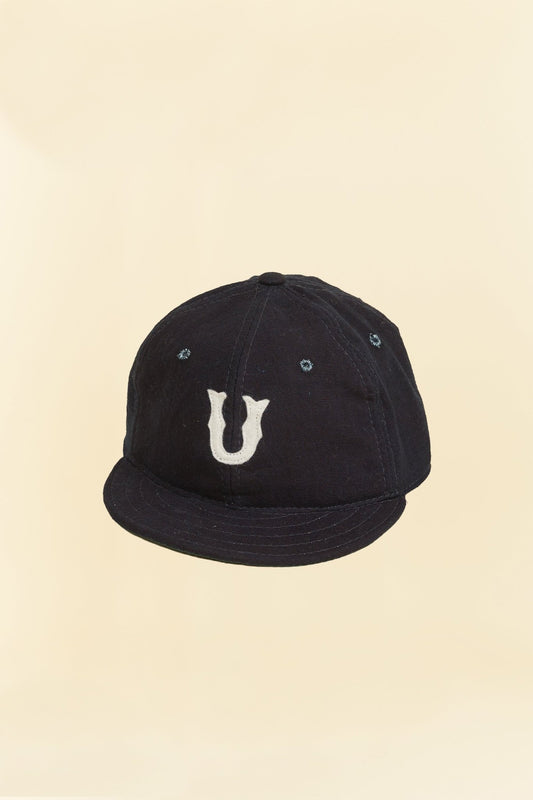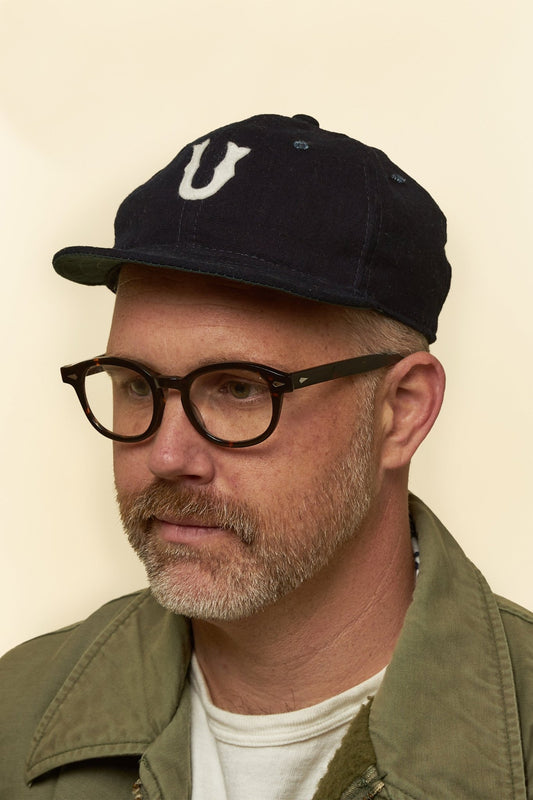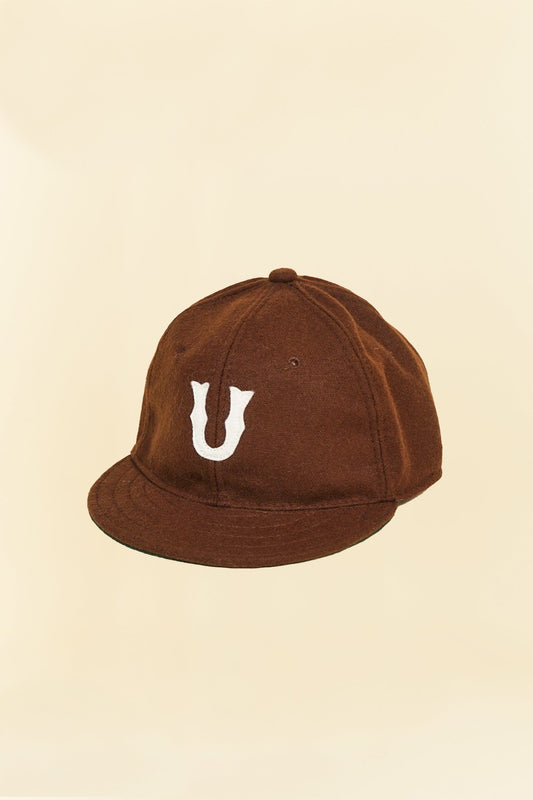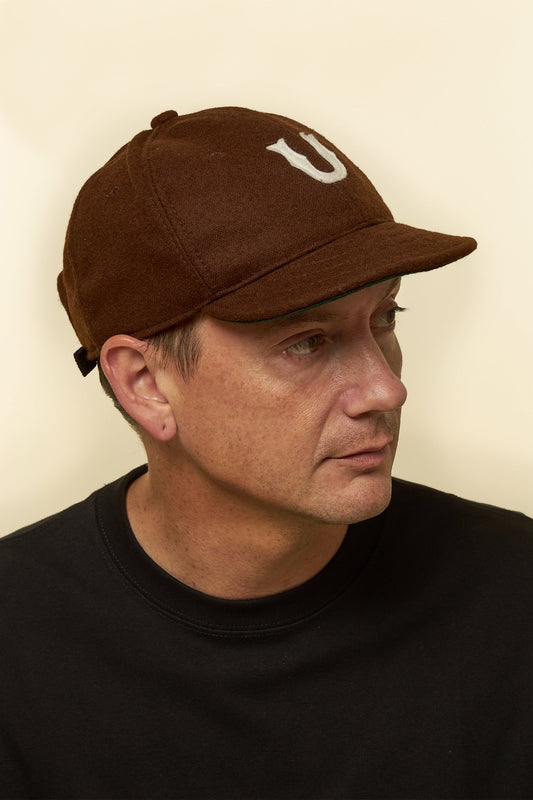A Conversation With Troy O'Shea

Luke catches up with Troy O'Shea on the back of our recent collaboration with the Brisbane based capmaker.
Firstly, thank you for working with us to celebrate 8 years of the store mate we really appreciate it.
As always you have absolutely nailed it, the 'U' Ballcaps are incredible... let us know the details on them!
This is my interpretation of an early 1900’s Ball cap. For this particular cap I've used an original 6 panel crown pattern, and have added a rear adjustable strap for sizing flexibility and comfort. I have utilized US milled Melton wool, a cotton twill sweatband, Reece 101 stitched eyelets, and an unbreakable short 2” inch stitched visor consistent with caps from the era. This particular pattern was prominent in the early 1900’s and although not an exact reproduction, I feel these caps are the closest that you will find to the originals of the time in regard to fit. All constructed using period correct machinery and processes.
Straight into an easy one... How you got into cap making!
Did you have any prior experience with textiles and sewing machines, or is it a skill you acquired along the way?
Cap making is a skill I picked up along the way. However, I've always been interested in clothing. I spent three years in Japan before diving into cap making, where I developed a fascination for Japanese textiles. Initially, I never saw myself creating anything. It was during a trip to the US with my wife when I purchased a cycling cap that didn't fit, that I decided to give cap making a try. At the time, I was working as a teacher in Australia and seeking something different to immerse myself in. So, I set out to learn how to sew, acquired a sewing machine, and committed to making a cycling cap!

URAHARA X TROY O'SHEA EARLY 1900'S BALLCAPS - BROWN MELTON WOOL & JAPANESE INDIGO COTTON
As simple as that, though Im sure there was a learning curve?
Haha, exactly! Upon my return, my goal was clear: learn to sew, get a sewing machine, and make a cycling cap without giving up until it's done. I tend to start projects and not finish them, so this time, I made a conscious effort to see it through. I would come home from work every night and immerse myself in the process, almost obsessively. From then on, I never looked back. And then began the hunt for period correct,vintage sewing machines...
-
Finding specific sewing machines can be quite a challenge, we spent a lot of time hunting down and restoring the Union Special 43200g chainstich hemming and Singer 47w70 darning machines that we use in the store.
What was the process like for you there?
I got lucky with finding my main machines within a relatively short period, about two years. Machines seemed to just pop up when I needed them. I scoured eBay and stumbled upon a stitch embroidery machine, then found my main straight stitch machine through a seller in Marrickville. It was owned by an elderly gentleman whose wife had passed away. Although challenging, much of it was a learning process as I went along.
-
Your journey has certainly grown and evolved since then and collaboration's have seemed to play a significant role in your growth and work. Could you share your perspective on their importance to the creative process?
As a creative, it can be challenging to constantly find inspiration on your own. Collaborating with brands, big or small, injects a fresh perspective and inspiration into my work. Working with Papa Nui, Wild Frontier Goods, and even Patagonia has been enriching. I enjoy contributing my skills to bring their unique ideas to life while also learning from their creativity.



It's interesting how collaborations spark creativity... Speaking of inspiration, your focus on vintage caps from the 1920s to the 1940s is evident. Is it a love for the craftsmanship and design of that era that drives that particular interest?
Absolutely. My fascination lies in the craftsmanship and design of that era rather than a particular interest in sports like baseball. My journey started with cycling caps, transitioned into Japanese denim and heritage brands, and eventually led me to military caps from WW2 and, subsequently, baseball caps. It's the craftsmanship and history of the era that captivate me.
-
Replicating the techniques and details of vintage caps must present its challenges. Are there any aspects that prove particularly difficult?
Replicating the intricate details of vintage caps, made by masters of their craft, presents numerous challenges. Each part, from embroidery to stitching and pattern making, was executed by different skilled artisans. Perfecting these techniques, especially pattern making, has been a continuous process for me.
-
Is there a cap in your collection or somewhere out there that you consider the perfect fit?
Years ago, I connected with a collector in the US who owned original caps from the 1930s and 40s. He generously offered to send me one for research in exchange for a few caps. This particular cap, with its mid-1930s to early 1940s style, became my ideal template.



Making those connections is as good as it gets!
In our world there's a love for finding vintage fabrics and / or repurposing vintage garments, bags, tents etc.
How do you go about sourcing and selecting fabrics for your caps?
It's largely been trial and error. Vintage fabrics, predominantly natural materials like cotton and linen, are my preference. Over time, I've developed contacts for sourcing these fabrics. When I come across a fabric that resonates with me, I envision it as a cap material. Recently, I've been experimenting with Japanese indigo fabrics, creating mash-ups with vintage baseball caps.
-
Thanks again mate, it has been a pleasure!
Lets finish up with you letting us know what's on the horizon for Troy O'Shea?
I follow my inspiration wherever it leads. My interests are ever-evolving. Recently, I focused on classic trucker 5-panel caps, and now I'm circling back to traditional baseball cap styles. The journey continues to unfold.
Shop the Troy O'Shea x URAHARA Collection
-
URAHARA x Troy O'Shea Early 1900's Baseball Cap - Japanese Indigo Cotton
Vendor:URAHARARegular price $200.00 AUDRegular priceUnit price / per -
URAHARA x Troy O'Shea Early 1900's Baseball Cap - Brown Melton Wool
Vendor:URAHARARegular price $200.00 AUDRegular priceUnit price / per




